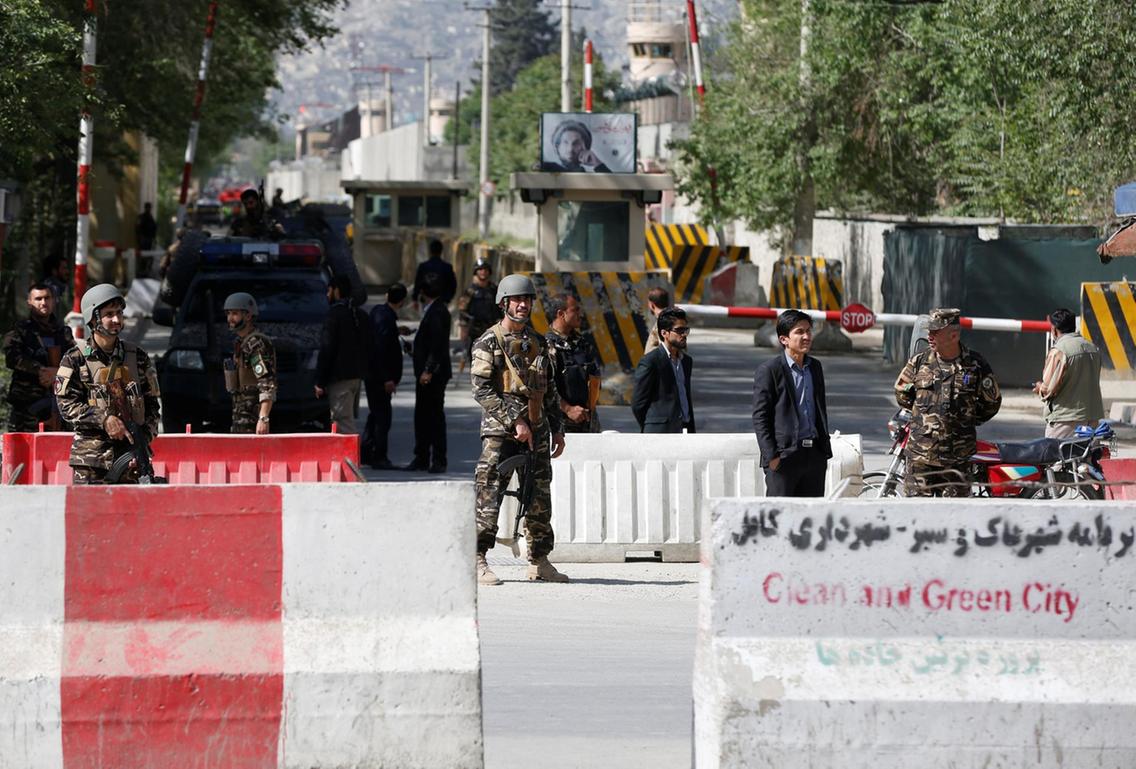At least 29 people were killed, including Agence France-Presse chief photographer Shah Marai and five other journalists, when two suicide blasts ripped through Kabul on Monday, police and AFP have confirmed.
The attacks, claimed by the self-styled Islamic State terror group, are the latest deadly assaults on the Afghan capital and have spurred an outpouring of grief among journalists, many of whom took to Twitter to post tributes to their colleagues, AFP reported.
Kabul police spokesman Hashmat Stanikzai said the second explosion came minutes after the first, and targeted reporters at the scene.
“The bomber disguised himself as a journalist and detonated himself among the crowd,” he said.
The interior ministry confirmed the death toll and said six journalists were among those killed. It also said 49 people had been wounded, amid fears the death toll could rise.
AFP confirmed that, along with Marai, two journalists from 1TV, one from Tolo news and one from Jahan TV were among the dead. A Reuters photographer was slightly wounded.
Bloody Spell
The first blast came shortly before 8:00 a.m. (03:30 GMT) near the headquarters of the Afghan intelligence services, when a motorcyclist detonated his explosives, the interior ministry said.
It comes days after the Taliban kicked off their spring offensive in an apparent rejection of calls for the militants to take up the Afghan government’s offer of peace talks.
A Taliban spokesman told AFP they were not involved in the attack. However, western and Afghan officials suspect that the Taliban’s Haqqani Network sometimes assists IS in carrying out attacks.
In an announcement issued via its propaganda agency Amaq, IS, which has dramatically stepped up its attacks in Kabul in recent months, vowed to target US forces and “their intelligence agents” as well as their “internal supporters”.
The blasts follow several bloody attacks across the country including a bombing that targeted a voter registration center in Kabul killing 60 people last week.
The Taliban said the offensive was partly a response to US President Donald Trump’s new strategy for Afghanistan announced last August, which gave US forces more leeway to go after insurgents.
Multi-Front Pressure
President Ashraf Ghani’s government is under pressure on multiple fronts this year as it prepares to hold long-delayed legislative elections in October, while its security forces struggle to get the upper hand on the battlefield and prevent civilian casualties.
Officials have acknowledged that security is a major concern because the Taliban and other militant groups control or contest large swathes of the country.
Some western and Afghan officials expect 2018 to be a particularly bloody year.
General John Nicholson, the top US and NATO commander in Afghanistan, told Tolo TV last month that he expected the Taliban to carry out more suicide attacks this fighting season.
Veteran Journalist
Marai joined AFP as a driver in 1996, the year the Taliban seized power, and began taking pictures on the side, covering stories including the US invasion in 2001.
In 2002 he became a full-time photo stringer, rising through the ranks to become chief photographer in the bureau. “I taught myself photography, so I am always looking to improve,” he said in a company profile in 2015. “Now my photos appear around the world.
“My best memories are when I beat the competition by getting the best photographs of the president or someone else, or from the scene of a bomb attack. I like to be first.”
He leaves behind six children, including a newborn daughter.
“This is a devastating blow, for the brave staff of our close-knit Kabul bureau and the entire agency,” AFP Global News Director Michele Leridon said.
“Shah Marai was a treasured colleague who spent more than 15 years documenting the tragic conflict in Afghanistan for AFP.
“We can only honor the extraordinary strength, courage and generosity of a photographer who covered often traumatic, horrific events with sensitivity and consummate professionalism.
“We also send our condolences to the families of other journalists killed in this terrible attack.”
Tributes from Afghan officials, analysts and journalists were pouring in on Twitter.
HIGHLIGHT: The attacks, claimed by the self-styled Islamic State terror group, are the latest deadly assaults on the Afghan capital


